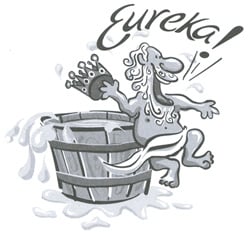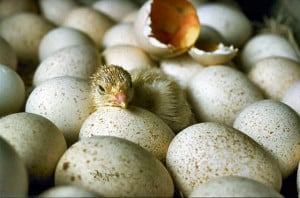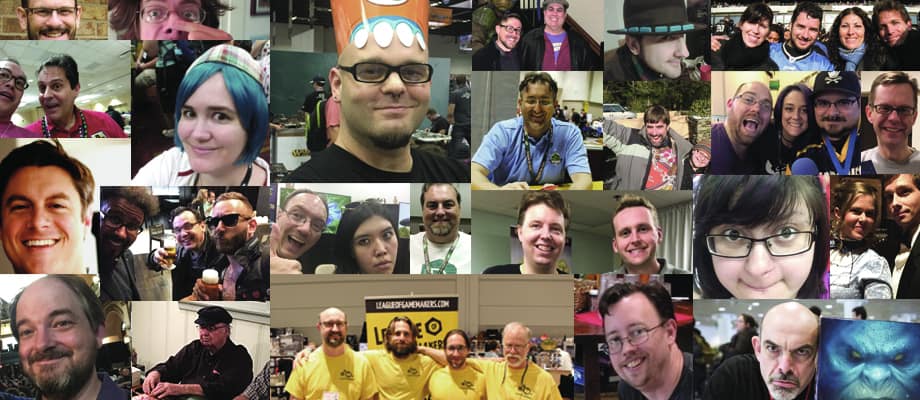
It had been at least a solid week without much progress in one of my designs. I’ll spare you many of the details, but I had a mechanic whereby playing cards, you would give some cubes to other players, and/or reduce your number of cubes. When an in-game event was triggered, players would receive consequences that worsened according to how many cubes they had. I struggled to find a mechanic that could trigger that event a few times in the game. I asked Facebook’s designers guild for some ideas (thank you, by the way – your suggestions eventually led to some valuable discoveries). Every solution I tried, however, seemed to put me in danger of over-designing. All that said, I was at a mental roadblock. I didn’t touch it for a couple days. Then I took a shower. I mean… I showered before that, too, but… it’s just that this shower… I’m not that gross… Never mind.
 What I’m trying to say is that for some reason, as I was going about my daily (okay, almost-daily) routine of stepping into the shower, the idea hit me. It was sudden and caught my conscious self off-guard. But I considered it and, without even touching the prototype, I knew it was the winning solution. A literal game-changer.
What I’m trying to say is that for some reason, as I was going about my daily (okay, almost-daily) routine of stepping into the shower, the idea hit me. It was sudden and caught my conscious self off-guard. But I considered it and, without even touching the prototype, I knew it was the winning solution. A literal game-changer.
WITHOUT EVEN TOUCHING THE PROTOTYPE, I KNEW IT WAS THE WINNING SOLUTION. A LITERAL GAME-CHANGER.
What happened? I was the unexpecting benefactor of the mysterious phase of the creative process called
THE INCUBATION PERIOD.
It’s not just me bringing this to our attention. In 1926, a psychologist by the name of Graham Wallas proposed four phases of creativity:
- Preparation
- Incubation
- Illumination
- Verification
There’s our incubation period, somewhere in between the gathering and processing of information, and that moment when the creative solution strikes. Maybe you’re familiar with the incubation period. Maybe it’s your term for an eight-hour Netflix binge. If we can be more intentional about the incubation stage of creativity, we can waste less time both struggling fruitlessly and slacking lazily.

Awww… what a cute little idea-ling!
So, how should we incubate (mental images of eggs and viruses aside)? Ut Na Sio and Thomas Ormerod, according to their 2009 study Does Incubation Enhance Problem Solving?, found that people whose incubation period consisted of an undemanding activity benefited more than those whose incubation period was spent doing a demanding activity or no activity at all.
It seems, then, that the best way to bust through some of our tougher design roadblocks is to dedicate a set amount of time after processing the problem and related information to participate in some unrelated activity–an activity that the brain still needs to think about and process, but not at a high level.
MY MENTAL ROADBLOCK SURROUNDING MY GAME DESIGN STEMMED FROM PROBLEM FIXATION.
I got so set on the problem of removing cubes while using them to trigger an event, among other thematic disconnects with the mechanic, that I couldn’t back away from it during playtesting. Apparently, I shower so infrequently that my brain needed to work on it a little bit, but still–that activity somehow made it possible for the brain to solve its problems without being under the scrutinizing, judgmental, watchful eye of my conscious. The result was a more productive 10 minutes of a shower than several hours of shuffling cards and pushing cubes.
(PS. since this is a design blog, after all, my solution is to have the players, through the playing of cards, gain color-coded cubes from one of four stockpiles. When a pile is depleted, it triggers the event, and the player with the most of that color avoids the negative consequence that everyone else receives. Thanks to Luke Laurie for that little idea nugget that eventually sprouted in the shower. It’s like you showered with me. Wait…)
Can you relate? How have you come across some of your significant design ideas?








